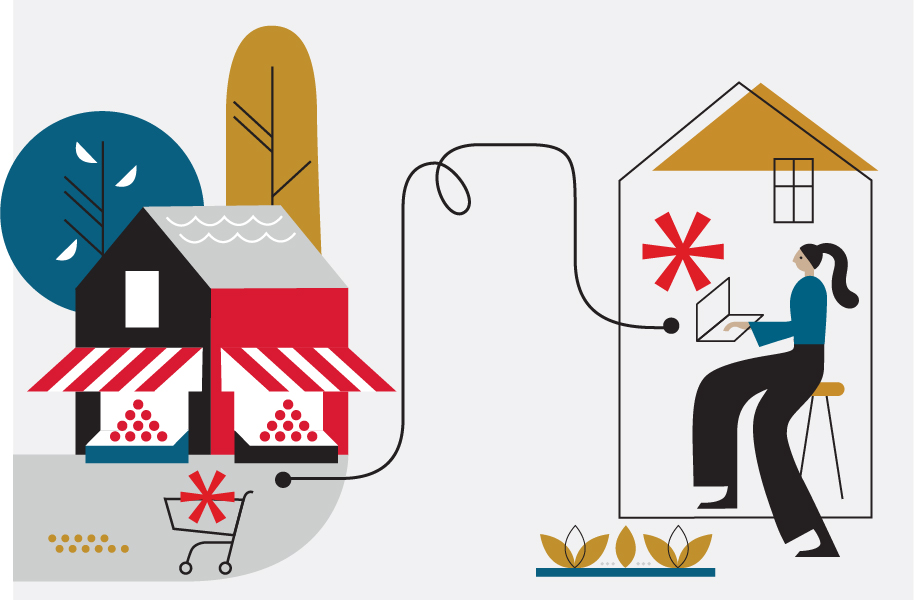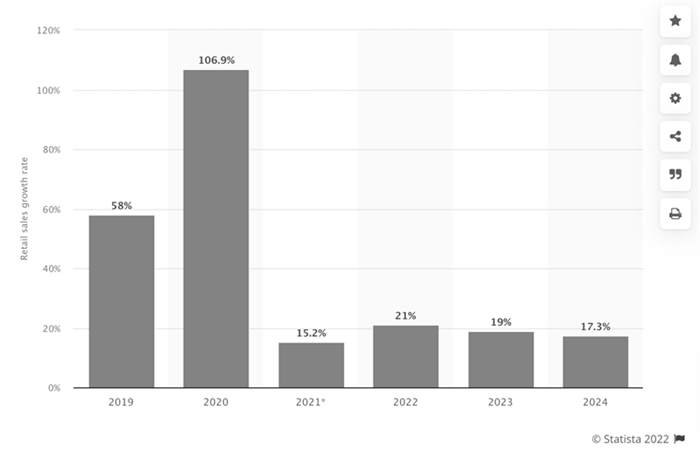Logística de Transporte
Industrias

[Updated post from February 16, 2021]
We all know that in-store shopping trips can involve a lot of friction. Visiting a retail location and being unable to find the item you were browsing online is a commonplace experience. There’s also the difficulty of lengthy queues at the checkout, navigating crowded aisles, and finding a store associate who can help you.
It’s hardly surprising that so many consumers are choosing to shop online to avoid these pain points. But this doesn’t mean that in-store retailing is dead.
The rise of omnichannel fulfillment services like Buy Online Pick-up In-Store (BOPIS) has given brick and mortar stores a much stronger value proposition, bringing together the strengths of online and offline shopping to create more choice and flexibility for customers.
In this blog, we're going to explore BOPIS in retail and fulfillment, and how retailers can implement a thriving BOPIS service that connects the capabilities of ecommerce and physical retail.
BOPIS stands for ‘Buy Online Pick-up In-Store’ and is also known as click and collect. It's an omnichannel fulfillment method where online shoppers can browse for items via an ecommerce website and place an order for pick up at a local store location.
BOPIS services belong to a broader group of omnichannel retail strategies that are commonly referred to as 'online-to-offline' or O2O retail. This includes:
In sum, BOPIS augments your fulfillment strategy by adding retail locations to your fulfillment network for the purpose of fulfilling online orders.
Having a BOPIS fulfillment option available enables your customers to avoid time-intensive browsing sessions in-store and guarantees that an item is available for purchase. It's a way for retailers to bridge the so-called 'experience gap' that exists between shopping online and buying products in-person, allowing customers to move seamlessly between selling channels as they see fit.
BOPIS options have existed at major retailers long before the onset of COVID-19. But it's the pandemic that has given BOPIS a new lease on life.
Thanks to stay-at-home orders and consumer anxieties about virus transmission, BOPIS recorded a remarkable 106.9% growth during 2020:

But research by Statista shows that BOPIS is far from just a pandemic fad. Future forecasts indicate that BOPIS retail sales will continue to experience steady annual growth, at rates above 15%.
This is confirmed by Raydiant’s State of BOPIS report 2021, which found that 60% of consumers plan on using BOPIS either the same amount or more often over the next twelve months.
In sum, BOPIS fulfillment has fast become an important tool for retailers to meet customer expectations for seamless omnichannel shopping experiences. Fortunately, BOPIS is something that all brands have the ability to offer with a bit of planning.
As the stats above reveal, many consumers will continue using BOPIS even after the effects of COVID-19 on retail have receded. So, why does BOPIS fulfillment hold so much appeal for consumers?
As convenient as home delivery can be, it comes at a cost to consumers. While many ecommerce brands now offer free shipping, this often comes in the form of a free shipping threshold that requires customers to place high-value orders. If you're only after one or two cheaper items, the shipping fees just aren't worth it.
Unsurprisingly, high or unexpected shipping costs are one of the most common reasons for cart abandonment in ecommerce. According to a survey by Forbes, 77% of consumers have abandoned a purchase due to a lack of ‘satisfactory’ shipping options, while 45% have abandoned cart when their order value didn’t qualify for free shipping.
Buy Online Pick-up In-Store allows consumers to sidestep this problem. They still get the hassle-free process of ordering online, but without the sting of shipping.
Delayed gratification is a huge part of the customer experience in ecommerce. When a customer clicks 'purchase', they know they'll have to wait a painful few days before their order is actually in their hands.
But this lag between ordering and delivery is shrinking. Same-day and next-day delivery expectations have rapidly increased amongst consumers during the pandemic. Today, 56% of consumers aged 16-34 expect a same-day home delivery option to be available to them.
Despite this, just 26% of store-based retailers in 2021 offered same-day delivery, mostly due to the high shipping costs and coordination required.
BOPIS avoids customers facing lengthy wait times for orders by removing shipping from the equation entirely. Because items are plucked right from the shelf, BOPIS orders can be fulfilled and ready for pick-up in as little as an hour, beating even the fastest home delivery offerings.
How many times have we browsed for a product online, only to go in-store and find that it isn't available? As well as resulting in a wasted journey, it undermines confidence in a retailer's ability to deliver (no pun intended).
Stock-outs and supply chain issues have been a constant feature in pandemic retail, and this has had a big influence on customer behavior. McKinsey’s 2021 holiday survey found that 40% of consumers started shopping for gifts earlier last year due to concerns over shortages and/or delayed shipping.
In this climate, BOPIS services act as an insurance policy against stock-outs. Customers get a guarantee that the product of their choice is waiting for them in-store.
Shopping online frequently requires consumers to purchase a product without trying or testing it in advance. This is one of the biggest reasons for consistently high return rates in ecommerce. According to Salecycle, 64.2% of online returns take place because the item 'did not match the description'.
Rather than receiving a product at home and having to initiate a return via mail on a separate trip to a retail location, BOPIS allows a customer to view the item upon pick-up and return in the same visit if needed.
It’s easy to see how BOPIS streamlines the shopping experience for consumers, but what benefits does it offer retailers?
Retailers who have both brick and mortar and online storefronts have a strong competitive advantage that the Amazons of the world lack. In BOPIS fulfillment, physical stores function as extensions of a customer’s online experience, rather than as a standalone and constricted channel. This added flexibility opens the door to some major advantages:
It's not just your customers that save big on shipping costs by using BOPIS. There's a growing expectation that retailers should be responsible for any and all shipping fees. A large majority of consumers (66%) expect free shipping on every purchase they make online.
The more customers that opt for in-store pick-up, the fewer orders that your business has to coordinate shipping for. Furthermore, offering a free pick-up option gives retailers more leeway to charge for home delivery because customers have a free alternative available.
Declining foot traffic has been a challenge for brick and mortar long before the pandemic. By fusing together the benefits of offline and online shopping in the same customer journey, BOPIS services give consumers more reasons to come into physical stores.
Moreover, BOPIS gives store associates greater opportunities for cross-selling and upselling. Because these customers coming to retrieve orders have already converted, they're more open to product suggestions than those who are ‘just browsing’. 49% of shoppers report making additional purchases when picking up their BOPIS order, showing a clear pathway to optimize in-store interactions with customers.
Phrases like "sorry, we don't accept online returns in-store" or "you can't pick up your order from this location" might be acceptable to retailers struggling with outdated inventory systems, but your customers certainly won't see it the same way.
The reason? Customers don't perceive selling channels as being in-store vs. ecommerce. They care about the 'me' channel and having the freedom to move between online and offline as they see fit.
Implementing a BOPIS service opens up more opportunities than just online-to-offline commerce. Integrated inventory also allows:
In sum, BOPIS makes for far more seamless inventory management - and in turn, higher rates of customer satisfaction overall.
Integrated inventory. For BOPIS to work effectively, retailers need to break down the silos between their selling channels so that inventory can be freed up to fulfill any outstanding orders. While this can seem more complex than designating inventory for either online or offline, it offers you a valuable opportunity to streamline order fulfillment across your business.
Real-time inventory visibility. Reliable inventory accuracy is essential to prevent BOPIS orders from being placed that include out-of-stock products. Retailers will need to seek out an Order Management System (OMS) that can facilitate a two-way integration between their ecommerce platform and their fulfillment locations. This means your inventory levels will sync automatically whenever a customer places an order or makes a return. This way, you can be confident that you can fulfill all orders that are placed.
If you don’t have an integrated inventory or real-time visibility into your stock levels, now is a great time to have a chat with an experienced omnichannel fulfillment provider like Ryder about how you can start offering Buy Online, Pick-Up In-Store to your customers.
Ecommerce might be a byword for convenience, but that doesn’t mean that consumers don’t abandon shopping journeys - or certain brands - that don’t deliver a seamless experience.
As well as giving consumers greater flexibility in their choice of delivery and pickup options, the rising popularity of Buy Online Pick-up In-Store marks a clear transition in how we conceptualize physical retail. BOPIS creates a critical bridge between your retail store and your ecommerce presence. With more consumers pursuing the convenience of online shopping and the tactile experiences of offline retail, BOPIS fulfillment offers the perfect strategy for broadening your omnichannel capabilities.